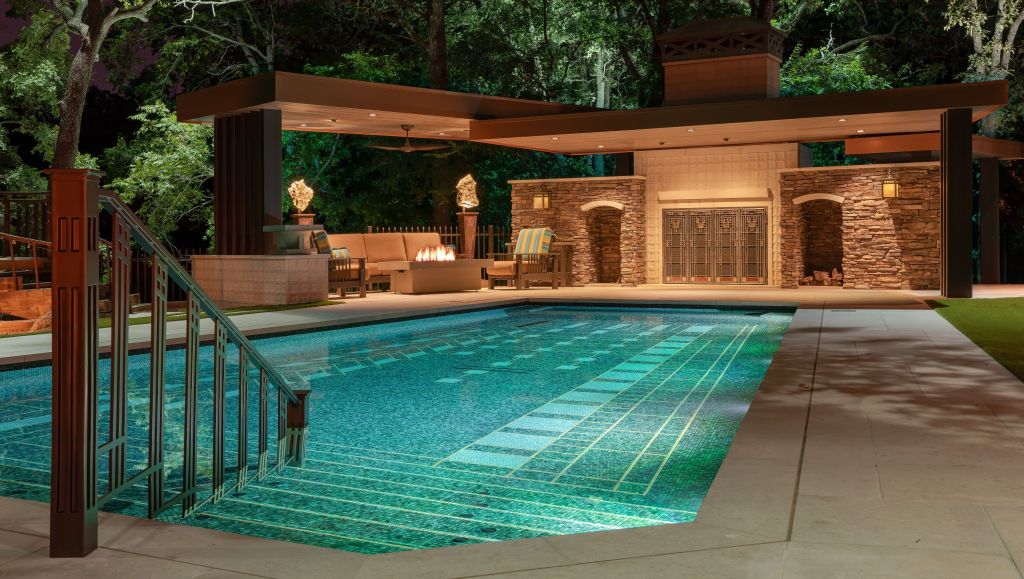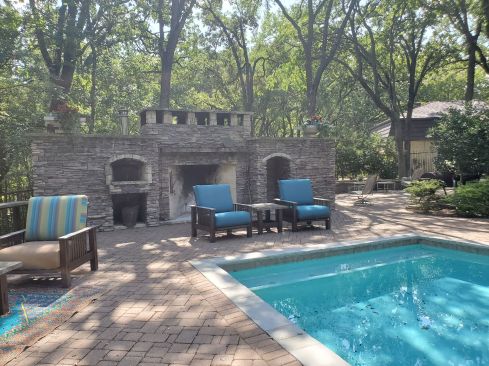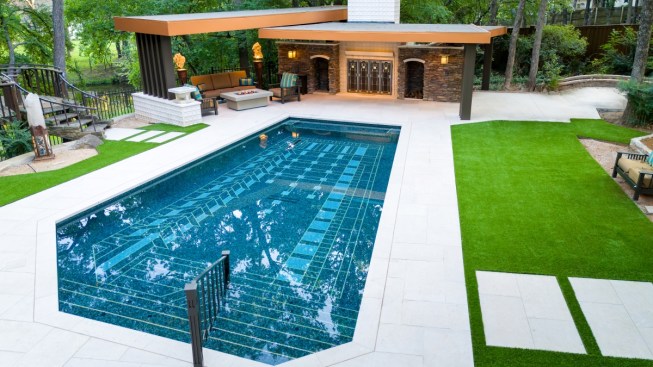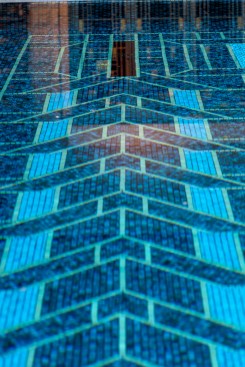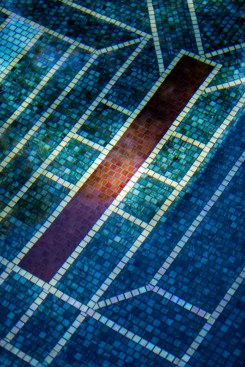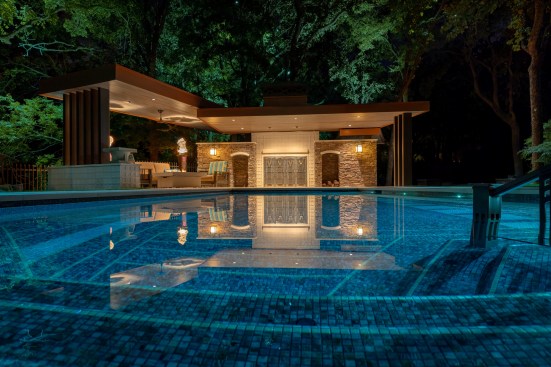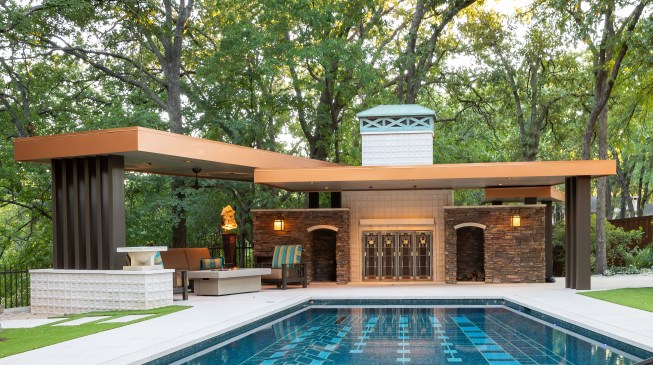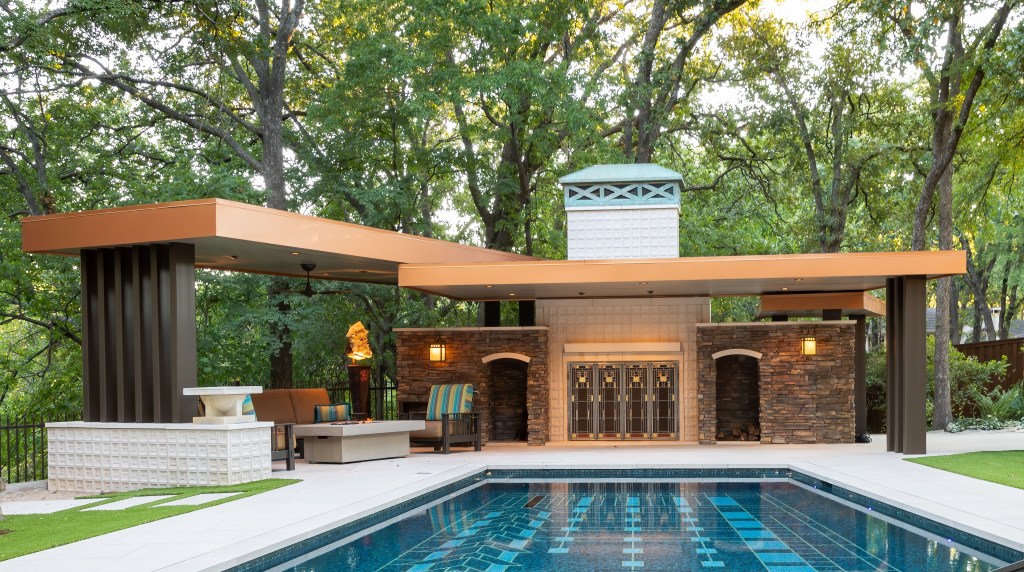
- Randy Angell, CEO,
Randy Angell Designs
Plano, Texas - Ray Corral, Founder/CEO
Mosaicist
Miami
Randy Angell has always been a fan of Frank Lloyd Wright’s Usonian style.
Homes under that category, named by Wright, were mostly built between the 1930s and 1950s and were meant to offer a more affordable version of his trademark Prairie School architecture. It still emphasized forming a connection with nature, but also employed more simplicity. The homes often featured low, flat roofs with large overhangs, strong horizontal elements, and natural materials including brick, stone, wood and steel. Wright also designed stained glass windows and tile patterns for some of these homes.
On this project, Angell found a client whose love of Wright rivaled his own.
“Usonian style has been a major influence in my overall design aesthetic,” says the CEO of Randy Angell Designs, based in Plano, Texas. “So it was really fun to have this client come to me who is also very much a lover of that style.”
Riley V Photography
Stylistic dedication
Incorporating the Usonian style wouldn’t be as straightforward as one might hope.
The home exterior bore no Wright influence. However, the homeowners had spent years modifying the interior. “When you walk through the front door, suddenly you’re transformed into this Usonian world,” Angell says. “They stripped down the whole interior of the house and brought in all wood elements and stained glass elements.”
They also added stone floors, custom tile work, and detailing in copper, brass and bronze. They even had a Wright-influenced tile custom created for their elevator.
“The final piece in the puzzle was to continue this feel out in the back,” Angell says.
Fortunately, the lay of the land meshed perfectly with the Wright aesthetic, with expansive, heavily wooded acreage and a natural pond and creek. “He always liked his homes to feel like they grew out of the land …,” Angell says. “A lot of that influence played a role in the vision for this backyard.”
The existing pool was basic, with concrete paver deck and coping, and a white plaster interior. But the geometric shape didn’t quite qualify as a rectangle. Narrower at the deep end, it flares out significantly at the shallow end, where the corners are beveled. It has no parallel or perpendicular lines, and no 90-degree angles. “It is one of the most bizarre shapes I’ve ever seen,” Angell says.
But as he saw it, the pool shape fit. “It plays into how Frank Lloyd Wright always experimented with different angles,” Angell says. “He used 30-degree and 60-degree angles a lot.
So he kept the shape as it was. For the pool interior, he adopted Wright’s practice of creating patterns that would be repeated throughout a home, whether it be on a stained-glass window, carpet, tile or stone work. He commissioned tile artist Ray Corral of Miami-based Mosaicist to recreate a pattern from inside the house for a pool mosaic.
The backyard included another existing element that worked in the redesign — a substantial stacked-stone fireplace. Angell not only kept it but sheltered it in one of three flat-roofed shade structures. “Following the Usonian style, I wanted to do the layered look as opposed to one big, flat roof,” Angell says. “Sometimes Wright staggered and overlapped roofs and had them at different heights.”
The tallest structure shelters the seating area, which as a soft and chairs. The mid level covers the fireplace, with its intricate screen work. Then the smallest and lowest structure, behind the fireplace, covers the outdoor kitchen.
“The shade structure is similar to the shape of the pool,” Angell explains. “There might be right angles, but the shade structures are narrow at one end and wide at the other, then set at different angles from one another.”
SUPPLIER:
- Coping/deck finishes: Crossville Studios
